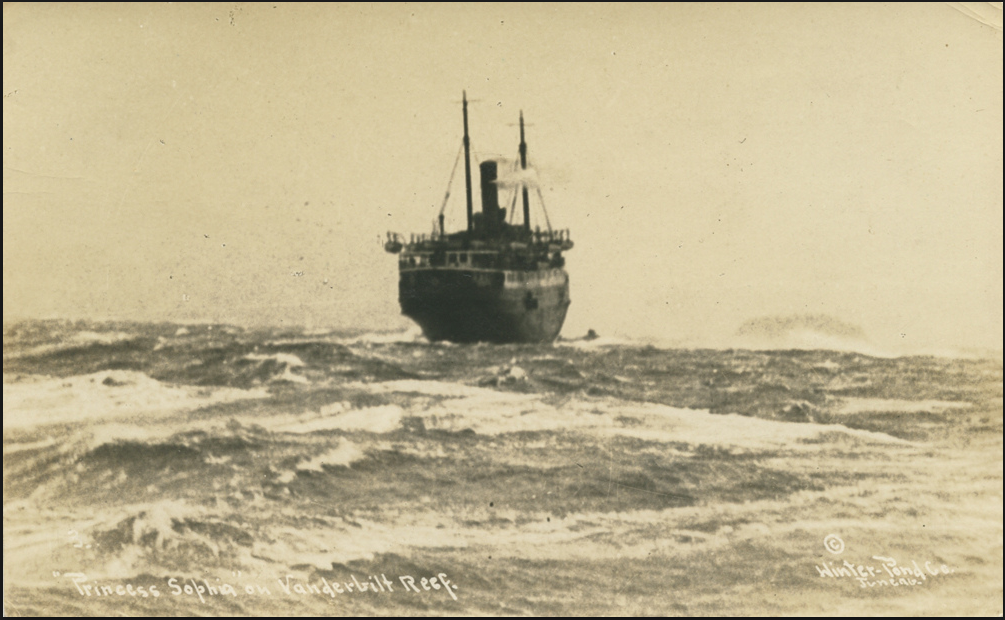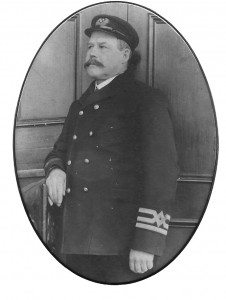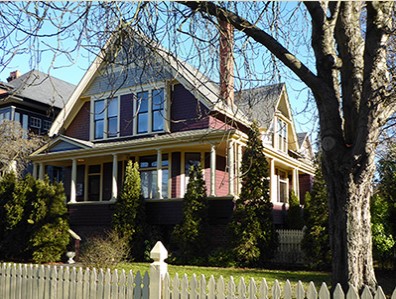On October 23, 1918– six years after the sinking of the Titanic—the SS Princess Sophia sailed out of Skagway, Alaska. Four hours later the ship slammed into a coastal reef killing all aboard. These men and women formed the backbone of the North and it was a devastating tragedy for the Pacific Northwest. More than 60 people are buried at Mountain View Cemetery. This is an excerpt from my book Sensational Victoria.
I first heard about the Princess Sophia in 2004 when the Vancouver Maritime Museum held a memorial service for the 350 passengers and crew killed in 1918. The Museum had recently acquired the ship’s bell from Betty Mantyla. Betty was given the bell by her grandmother, who was given the bell by a diver.
When the Princess Sophia sailed out of Skagway 94 years ago, it was the final voyage of the year before the big freeze set in and she was jammed from cabin to steerage. There were pioneers of the gold rush, riverboat captains, 50 women and children, and newly enlisted soldiers on their way to fight in the Great War. Lulu Mae Eads was aboard, the same Lou that Robert Service wrote about in The Shooting of Dan McGrew. There were 24 horses and five dogs in the hold.

Captain Leonard Locke, 66, had spent his life at sea and had made this voyage many times. But four hours after setting sail, the Sophia slammed into Vanderbilt Reef. The Sophia wasn’t taking on water and Locke felt that the ship could float free off the reef at high tide. But the wind increased and the snow thickened, and after almost 40 hours the Sophia slid backward off the rocks and went stern-first into the sea. The boilers exploded. Those passengers not trapped inside the ship, suffocated in the oil from the fuel tanks.
Those bodies that were recovered returned to Vancouver on the Princess Alice on November 11, 1918—the day the war ended.

An inquiry found that the ship was lost through “peril of the seas” and not through the fault of Captain Locke. Newspapers blamed him anyway.
Legal battles stretched on until the early 1930s. Emily, Locke’s widow received $2,249.99. The passengers’ relatives got nothing.
There have been books written about the Sophia, but unlike the Titanic which had little effect on the Pacific North West, most people have never heard of the disaster.
I met Syd Locke, the grandson of Captain Locke at the memorial service. He lives in Seattle. His father Frederick, was one of Locke’s five children with wife Emily. Born in 1891, he was with the Canadian Engineers during WW1 and drowned in a tugboat accident in Seattle when Syd was 11.

“All of my ancestors have drowned as far back as anybody remembers. My mother wouldn’t let me go to sea. ‘It’s going to end here,’ she said.”
Although Syd never met his grandfather, what upsets him most is that accounts of the shipwreck don’t address the human side of the tragedy. There was Walter Gosse, for instance, a lookout and the younger brother of second officer Frank Gosse. Both brothers were at a dance. Frank made the sailing, but Walter was left behind. And there was Archibald Alexander, chief engineer from Victoria, who stayed behind because his twin daughters were seriously ill with Spanish flu. “How did he feel when all his friends went down?” asks Syd.
The shingled Edwardian house at 1005 Cook Street in Victoria that Locke built in 1907 is still there. The house is now a commercial building and has a heritage designation.
© All rights reserved. Unless otherwise indicated, all blog content copyright Eve Lazarus.


